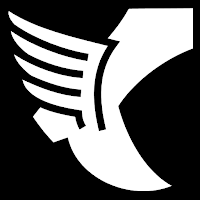Starting with Field of Glory in 2008, and continuing with the excellent Bolt Action in 2012 Osprey Publishing has published a number of high quality rules for use with miniatures in a wide variety of genre. This multi-genre approach to miniature wargaming is best highlighted in the series of blue spined paperback digest books (Little Blue Books? LBB) they began publishing in 2012. This series started with the Dux Bellorum “Historical” Arthurian rules and has included a number of excellent games like In Her Majesty's Name, A Fistful of Kung Fu, or Black Ops: Tactical Espionage Wargaming.
Building on the success of the LBBs, they released the first edition of the Frostgrave fantasy miniature skirmish game in 2015. A couple of years later, they streamlined and clarified the rules with a second edition.
Like many of Osprey's offerings, Frostgrave has an easy to learn system that is highly flexible and moves quickly. The focus of the rules are on casual fun and not on tournament play. In some ways, this is a similar approach to the one that Games Workshop has with their smaller minigame offshoots of Warhammer 40k and Warhammer Age of Sigmar such as Space Marine Adventures or Blitz Bowl, only cheaper and more ecumenical with regards to which miniatures can be used.
Unlike Games Workshop’s current Brandon Sandersonesque epic fantasy game Age of Sigmar, Frostgrave is firmly entrenched in longstanding and traditional fantasy tropes. Frostgrave shares many thematic elements with Games Workshop's classic Mordheim game, but is much easier to learn is more focused on story than Mordheim was when it was first released. Though it has some advancement rules, again similar to Mordheim, in Frostgrave those advancements are limited to a few characters in your warband which minimizes bookkeeping from session to session. Frostgrave is so easy to learn that it inspired me to begin creating a derivative game that I can use to play with my 7 year old twin daughters History and Mystery. Inspired by James August Walls’s many Google+ posts about gaming with his family, I began designing a mashup of Disney Infinity and Skylanders to play with my twin daughters.
The game never quite got finished and I thought I would take it back up again. We still have a ton of Disney Infinity and Skylanders figures around the house and since both of those games are unsupported by their designers, I’d love to put those wonderful figures to good use. I even designed a couple of potential logos for use in my home game back in the day.
As easy as the rules for Frostgrave are to learn, they do have a couple of "fiddley-bits" that might have made things a little complex for playing with my daughters. For example, in the Frostgrave rules as written it is possible to hit an opponent and not injure them and most rolls in the game are contested rolls. By and large, I am not a fan of contested rolls. I understand their utility in competitive games, but I plan on running this game more like an RPG than a competitive wargame. So I want to move away from having contested rules as much as possible and use a Monte Cook and Numenera inspired mechanic where the players to all the rolling. Additionally, Osprey has not published a fan license that states what we as fans are and are not allowed to do with their rules, so I've decided to use a rules set inspired by the actual Frostgrave rules.
So here are the beginnings of the simple rules I came up with and which I want to get feedback on to expand. I’m happy to change themes later so that these can become the basis for something more, but I’d love to have all of you pitch in on the development with your thoughts.
1) All die rolls are made with a d12.
2) Turns follow the following pattern.
a) Roll for Initiative.
b) Hero Phase
c) Ally Phase
d) Villain Phase
3) Player Characters are rated in the following areas:
MOVEMENT -- Min (4)/Max(10)
MELEE -- Min(-2)/Max(+4)
RANGED -- Min(-2)/Max(+4)
RESISTANCE -- Min(0)/Max(5)
MENTAL RESISTANCE - Min(0)/Max(+4)
4) Villains are rated in the same statistics, but their numbers are 5 higher for all values
other than Health and serve as difficulty numbers the players must roll better than.
5) On a player's turn, the player may move and take 1 action. That action may be an
attack, a power activation, or another movement action.
6) When a player attacks a Villain, the player rolls 1d12 and adds their relevant statistic
(melee in hand to hand and ranged for ranged attacks). They then add their statistic to that value. If that value is greater than the Villain's equivalent statistic, the Villain has been hit.
7) On a successful hit, subtract a Villain's Resistance from the total and what remains is the amount of Health lost.
8) If a character is "prone" then it takes half of their movement to get up.
9) To activate a power, the player rolls 1d12 and compares it to the activation score of
the power. If it is higher than the score, the power is activated.
10) When a Villain attacks a Hero or Ally, the Player rolls a Melee or Ranged test. If the roll is higher than the Villain's value in that area the attack misses.
11) Villain powers activate in the same manner as Player powers. This is one of the few
rolls the Game Master will make.
I've only done stats for a couple of characters, but I have a feeling that this will be fun. What are your thoughts?
All icons used in this post were made by Lorc. Available on http://game-icons.net





















